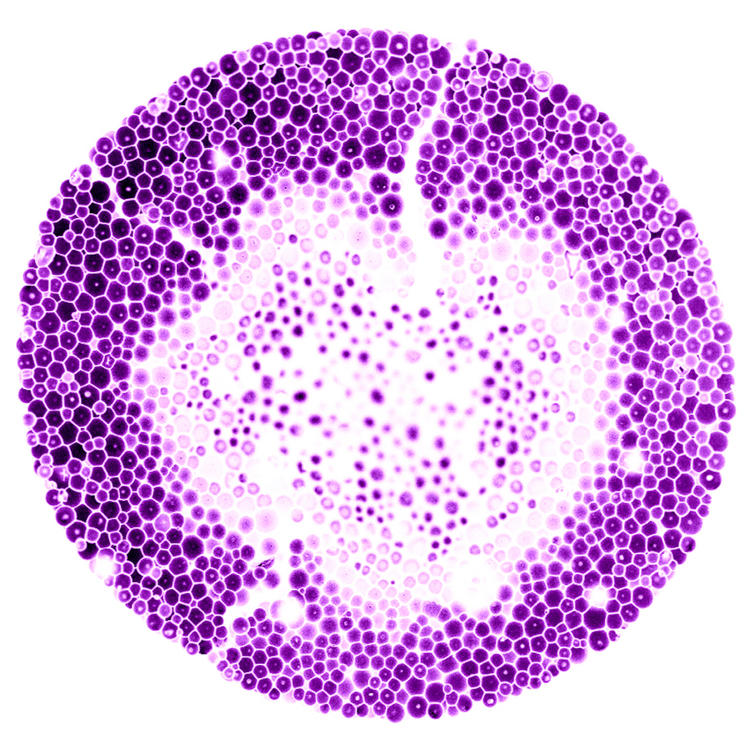
Image credit: H. Jeremy Cho
We study how polymer chemistry, gel microstructure, internal fluid transport, and external constraints jointly control how porous hydrogels deform, fracture, and potentially even self-heal. Our main thrusts and research questions include:
- Swelling/deswelling in complex environments. Obstructions and boundary constraints influence hydrogel swelling/deswelling in a wide range of settings. How do these complexities influence the morphology and integrity of swelling hydrogels? How do the hydrogels in turn influence their surroundings? And how can we use these insights to design hydrogels whose swelling and mechanics are optimized for use in a given environment?
- Designer multifunctional hydrogels. Their versatility makes hydrogels attractive for use in environmental, manufacturing, agriculture, and biomedical applications, which require gel properties to be predictable and controllable. How can we leverage methods from soft materials chemistry to develop design principles for multifunctional hydrogels that can e.g., harvest water from air in an energy-efficient manner, or deform in programmable ways?
These results are expanding current understanding of gel swelling to more complex environments and modes of deformation. Ultimately, our goal is to develop fundamental principles that inform the use of gels in agriculture for water management in soil, in formulations for the development of functional coatings, and for environmental water harvesting.
